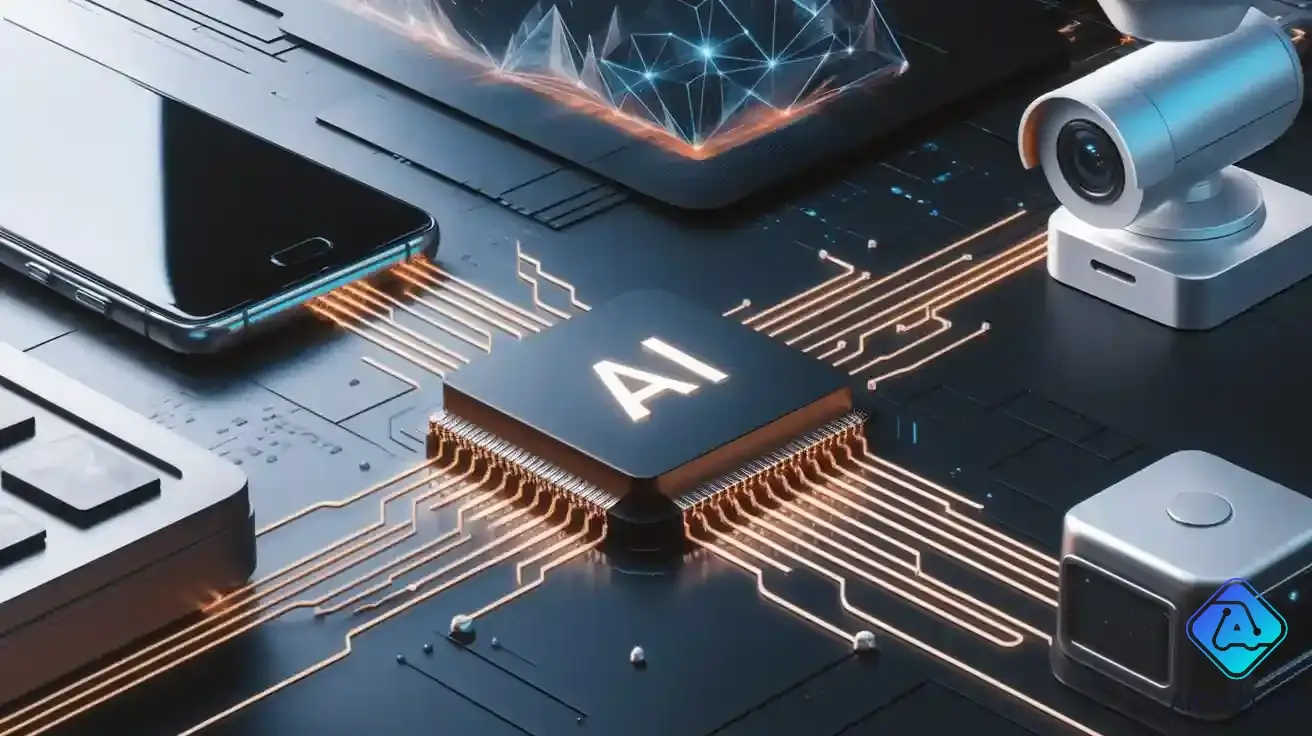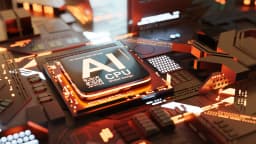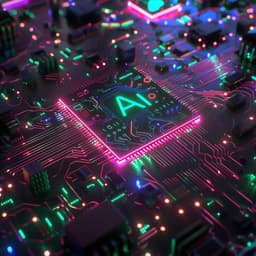
AI edge computing means using artificial intelligence on edge devices. These devices can be sensors or smartphones. It does not only use cloud servers. This way, edge ai can handle data and make choices near where data starts. The edge computing market is growing very fast, as you can see below:
| Metric | Value (USD Billion) | Year/Period |
|---|---|---|
| Market Size (Estimate) | 20.78 | 2024 |
| Projected Market Size | 66.47 | 2030 |
| Compound Annual Growth Rate | 21.7% | 2025 to 2030 |
| North America Market Share | 37.7% | 2024 |
-
AI edge computing helps power new technology like smart homes, healthcare, and factories.
-
Edge ai lets artificial intelligence work on devices that do not have much power.
-
New ideas in ai and edge computing help fix problems fast and make things safer in many fields.
Key Takeaways
-
AI edge computing lets artificial intelligence work right on devices like phones and sensors. This helps make quick choices close to where data starts.
-
Edge AI handles data right away. It cuts down on waiting and internet use. This makes things safer and work better in many areas.
-
Keeping data on devices helps keep it private and safe. This makes edge AI great for important places like healthcare and finance.
-
Using edge AI costs less and uses less energy. It does not need cloud servers as much. This helps companies save money and care for the planet.
-
Edge AI helps companies grow by adding more smart devices easily. This lets them give better services at home, in factories, and in travel.
How AI Edge Computing Works
AI Algorithms on Edge Devices
Edge computing lets devices like phones, cameras, sensors, and robots use artificial intelligence. These devices gather data and work with it right where it is made. Edge ai models, like smaller versions of GPT-4o Mini or Llama 3.1 8B, are built to run well on devices with less power. Special hardware, such as GPUs and NPUs, helps these devices process ai faster. Edge ai software, like TensorFlow Lite and PyTorch Mobile, makes it simple to put ai models on edge devices and manage them. The table below lists the main parts of edge ai systems:
| Component/Process | Description |
|---|---|
| Edge Devices | Devices that gather data and use ai nearby, which lowers waiting time. |
| AI Models | Small, smart ai models that work well on edge devices. |
| Specialized Hardware | Hardware that helps ai run faster and saves power. |
| Edge AI Software | Tools and platforms that help put ai on edge devices and control it. |
Real-Time Data Processing
Edge ai lets devices look at data right away after collecting it. This helps devices do things like check videos, manage traffic, or watch health in real time. They do not need to wait for cloud servers. For example, a smart camera can spot something strange and send a warning fast. Real-time data processing cuts down on waiting and uses less internet because only important data goes to the cloud. Edge computing gives feedback right away, which is needed for things that must react fast.
Note: Real-time data processing in edge ai helps devices act fast, so they are good for safety and working better.
Local Decision-Making
Edge ai lets devices make choices on their own without using the cloud. This makes them faster and more dependable. For example, self-driving cars use edge ai to make quick choices, like moving away from danger, in less than 10 milliseconds. Keeping data on the device also keeps private information safe. Edge ai systems keep working even if the internet stops, which is important for things like rescue missions or keeping factories safe. Making choices right away with edge computing helps get better results by acting fast and knowing what is happening.
Edge Computing vs. Cloud AI
Processing Location
AI edge computing and cloud AI work with data in different places. Edge devices like sensors or cameras handle data close to where it starts. This helps cut down on waiting and keeps private data safe. Cloud AI sends data to big data centers for checking. These centers have strong computers and can use big AI models. Where data is processed changes how fast devices answer and how much data moves on the network.
-
Edge computing works with data near where it starts, so there is less waiting and less traffic.
-
Cloud AI uses big servers with more power, but sending data can slow things down.
-
Edge devices use special hardware to run AI with less power and memory.
-
Things that need fast answers, like facial recognition, do better with edge processing.
Latency and Bandwidth
Latency is how long it takes for data to move and get checked. Edge AI looks at data right away, so devices can act fast. This matters for things like self-driving cars or smart factories. Cloud AI is slower because data must travel to and from the cloud. Edge computing also saves bandwidth. Devices shrink and sort data before sending only what matters to the cloud. This means less network use and lower costs. Cloud AI needs strong internet for updates and checking data. Edge AI can still work if the internet is slow or not working.
-
Edge networks help with fast answers and low waiting time.
-
Cloud AI needs a lot of internet speed for big jobs.
Privacy and Security
Edge AI checks data on the device, so it does not need to send private information over the internet. This keeps data safer from hackers and attacks that can happen when sending data to big cloud servers. Edge AI makes things more secure and private, which is good for places like hospitals, banks, and defense.
By checking data on the device, Edge AI does not send all data to the cloud. This lowers the chance of cyber attacks and helps follow data rules. Edge AI is safer and better for privacy than Cloud AI, which has more risks because it sends data over networks.
Benefits of AI Edge Computing
Real-Time Analytics
AI edge computing lets many industries use real-time analytics. In factories, edge devices check visual data right on the floor. This means they can spot problems or control robots fast. Workers do not need to wait for cloud servers. This quick response helps keep people safe and helps them work better.
In healthcare, edge AI works with IoT medical devices to watch patients all the time. These devices track things like heart rate and movement. If something strange happens, the system sends a warning right away. Smart cameras in hospitals use edge AI to see if someone falls and tell nurses quickly. Processing on the device means doctors get results faster and more accurately, since data does not travel far.
Real-time analytics from edge AI helps industries act quickly, stay safe, and make good choices.
Enhanced Privacy
Edge AI gives better privacy by keeping private data on the device. Hospitals, banks, and factories like this because their information stays local. This lowers the chance of hackers or leaks. Data privacy rules, like GDPR and CCPA, say companies must protect user data. Edge computing helps follow these rules by hiding data and keeping it only for a short time.
Security features like hardware encryption and safe updates protect edge devices. These tools make it harder for hackers to steal or change data. Edge AI also helps companies follow special rules, like HIPAA in healthcare, by keeping patient data safe and letting only certain people see it.
Better privacy and strong security make edge AI a smart pick for places that use private information.
Cost and Sustainability
AI edge computing saves money by handling data on the device. Companies do not have to pay for cloud services all the time. For example, edge AI can cut costs by up to 96% compared to using the cloud. Businesses save money on storage and sending data, especially when they need fast answers.
Edge computing also helps the planet. Big cloud centers use lots of energy and make more pollution. Edge devices work close to where data is made, so they do not need to send data far. This uses less electricity and lowers pollution. Many edge devices are built to save energy and can use solar power. Smart grids, homes, and hospitals use edge AI to manage energy and help the environment.
-
Edge computing helps companies spend less money.
-
Edge AI uses less energy and is better for the planet.
-
Companies can meet world emission goals by using edge devices.
Scalability
Edge AI helps companies grow and change easily. They can add more edge devices when needed without slowing down the network. Each device can handle data and make choices by itself. This lets companies manage more data and new jobs without problems.
Edge computing lets devices work alone. This makes AI easier for more people and businesses to use. Companies can use AI in faraway places or where the internet is weak. Edge AI works for many things, from smart homes to big factories.
Scalability means companies can grow their AI systems fast, reach more people, and solve more problems.
AI Edge Computing Use Cases

Healthcare
Hospitals use edge AI to check patient data from smart devices and trackers. Doctors get alerts right away if a patient’s health changes. Edge AI makes video calls in telemedicine smoother and faster. It keeps patient information private by handling data on the device. Hospitals use AI to plan staff schedules and manage resources better. This helps give better care and saves money.
Note: Edge AI in healthcare helps save lives by making fast choices and keeping private data safe.
Manufacturing
Factories use AI of Things and edge AI to watch machines and find problems early. Sensors send data to edge devices, which look for signs of trouble. This stops breakdowns and cuts downtime. Companies like BMW and Samsung use AI vision systems to check products for mistakes. Robots fix problems right away, so quality and customer happiness go up.
| Company | Application Area | Outcome |
|---|---|---|
| BMW | Vision systems | 30% fewer defects, 15% higher satisfaction |
| Samsung | Defect detection | 31% fewer returns |
| Medtronic | Component inspection | Better defect detection, fewer false alarms |
Smart Homes
Smart homes use edge AI for quick and private automation. Devices like smart thermostats and lights use AI to change settings based on people and time. Voice assistants handle commands on the device, so they answer fast. Security cameras use edge AI to spot movement and danger, keeping video data inside the home for privacy.
-
Edge AI in smart homes means less waiting and more safety.
-
Devices keep working even if the internet stops.
Retail
Stores use edge AI to track inventory and watch customers in real time. Cameras and sensors help workers refill shelves and catch theft. AI checks sales data on-site, so managers can make fast choices about prices and deals. This gives better service and cuts waste.
Transportation
Edge AI runs self-driving cars and smart traffic systems. Cars use edge AI to make quick choices, like avoiding things in the road. City buses and traffic lights use AI to control traffic and stop delays. In trucking, edge AI helps groups of trucks drive safely and save fuel by reacting fast to road changes.
Edge AI in transportation makes roads safer, helps things run better, and supports smart cities in the future.
AI edge computing is changing how we use technology. It helps devices make fast choices and keeps data private. It also helps companies save money. Many businesses are starting to use it quickly. By 2027, spending may reach $350 billion. Edge solutions work faster than cloud AI because they keep data close. This also helps protect private information. Experts say to use special models and mix systems for the best results. New things like 5G and blockchain will help edge computing grow. Many areas, like healthcare and factories, already use edge computing for speed and better work. You should think about how this technology can help you solve problems.
FAQ
What is the main difference between edge AI and cloud AI?
Edge AI checks data right on the device. Cloud AI sends data far away to big servers. Edge AI gives answers faster and keeps your data safe. Cloud AI can do bigger jobs but might be slower.
Can edge AI work without the internet?
Yes, edge AI can work with no internet. Devices look at data by themselves. They do not always need to be online. This helps in places with no signal or when the internet is down.
Is edge AI safe for personal data?
Edge AI keeps most data on the device itself. This makes it harder for data to leak out. Many places use edge AI to keep private things safe, like health or money records.
What devices use AI edge computing?
-
Smartphones
-
Security cameras
-
Smart speakers
-
Industrial sensors
-
Medical monitors
These devices use edge AI to make fast choices and give feedback right away.

Written by Jack Elliott from AIChipLink.
AIChipLink, one of the fastest-growing global independent electronic components distributors in the world, offers millions of products from thousands of manufacturers, and many of our in-stock parts is available to ship same day.
We mainly source and distribute integrated circuit (IC) products of brands such as Broadcom, Microchip, Texas Instruments, Infineon, NXP, Analog Devices, Qualcomm, Intel, etc., which are widely used in communication & network, telecom, industrial control, new energy and automotive electronics.
Empowered by AI, Linked to the Future. Get started on AIChipLink.com and submit your RFQ online today!













